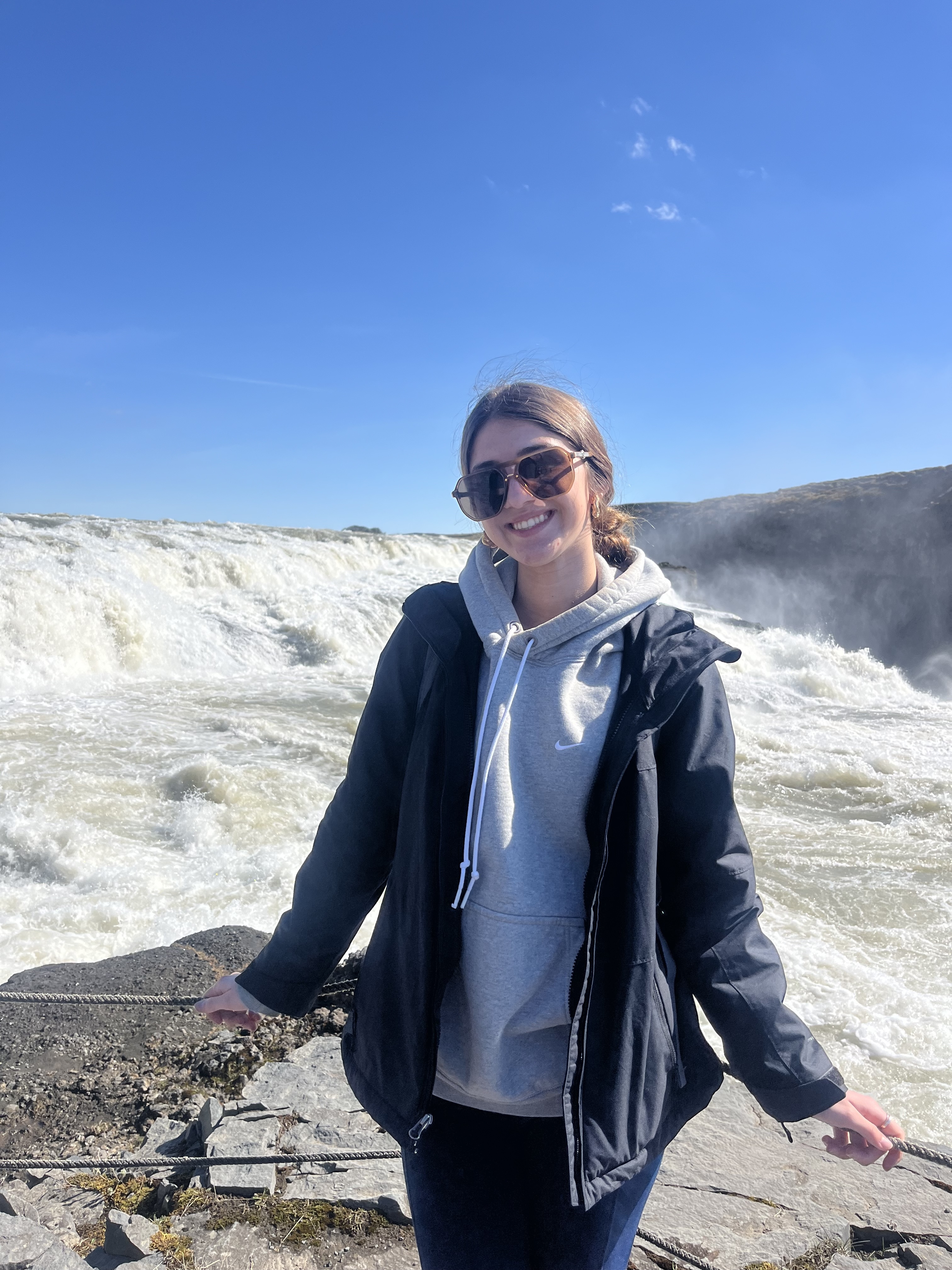Every year, Â鶹ĘÓƵ×îĐÂ×îČ« University students study abroad in hundreds of different programs that span the globe. With more than 200 education-abroad programs in more than 60 countries, it's safe to say there is a program out there for every student interest. And with a commitment to providing scholarships to help support education-abroad programs, many students are able to participate with at least some financial help. This summer, the College of Arts and Sciences sponsored two programs focused on sustainability, conservation and naturalism, while offering students a chance to travel to dream locations: the Galápagos and Iceland.
"Exploring Iceland: Landscape, Culture and Sustainability" took students to the southern coast of Iceland, where they were able to study and experience Iceland’s unique geological landscapes, innovative approaches to sustainability and rich culture.
Mandy Munro-Stasiuk, Ph.D., dean of the College of Arts and Sciences, along with Scott Sheridan, Ph.D, professor in the department of geography, led the trip and were instructors of the course.
"Geologically speaking, Iceland is an amazing place to learn about tectonic, volcanic, and glacial landscapes. Iceland sits on the Mid-Atlantic Ridge, where the Eurasian and North American tectonic plates are moving apart from each other, creating dramatic volcanic activity, geysers and geothermal hot springs. Iceland is also home to the largest ice masses in the world after Antarctica and Greenland," Munro-Stasiuk said. "In terms of sustainability, Iceland is a world leader. Nearly 100% of Iceland’s electricity and heating come from renewable sources (hydroelectricity and geothermal power). The country is also a pioneer in sustainable fishing, eco-tourism and carbon capture initiatives."
Mandy Munro-Stasiuk"Research consistently shows that students who participate in study abroad are more employable than their peers without study abroad because it provides transferable skills, cross-cultural competence and cross-cultural communication skills that regular classes often do not."
Munro-Stasiuk has experience conducting research in Iceland and is an expert on the Icelandic landscape. She wanted to expose students to "one of the best outdoor laboratories in the world," as she puts it. "As a geomorphologist, I believe that I have the ability to connect big-picture environmental and sustainability issues to their experiences in Iceland and back home," she said.
In the education-abroad trip to the Galápagos, students had the once-in-a-lifetime opportunity to walk in the footsteps of Charles Darwin and visit sites that helped inspire his Theory of Evolution by Natural Selection. There is no better natural laboratory than the Galápagos Islands to study the diversity of life, its origin and functions.
Sangeet LamichhaneyI also want them to see themselves as part of a larger scientific and cultural community. Whether they pursue science careers or not, I hope the trip inspires them to be more thoughtful, informed and engaged citizens of the world.
"The Galápagos serve as a powerful backdrop for students to move beyond textbooks and engage directly with evolutionary principles and conservation challenges in the field," said Sangeet Lamichhaney, Ph.D., assistant professor in the department of biological sciences and leader of this trip.
Lamichhaney has a strong background in conducting research in the Galápagos, with more than 15 years of experience working with Darwin’s finches – beginning with his undergraduate studies and continuing to the present day. Drawing on his firsthand experience and in-depth knowledge of the local environment, he saw a valuable opportunity to develop a course in the Galápagos. And this would have the added benefit of giving the students the ability to directly engage with ongoing field research led by their course instructor.
Professionally, the takeaways are vast. The experience helps students build valuable skills in field research, data collection and cross-cultural communication. They work closely with faculty, park staff and local organizations while gaining insights into international collaboration, environmental policy, biodiversity conservation and sustainable tourism. These experiences are particularly relevant for careers in biology, conservation, environmental science, public health and global studies.
But more than just a biology lesson, this trip encourages curiosity, critical thinking and a broader understanding of global issues like biodiversity loss, conservation and sustainable development. I want students to experience what it feels like to do science - asking questions, collecting data and thinking about how their actions connect to global challenges, Lamichhaney said.
Sangeet LamichhaneyStudy-abroad experiences help students grow personally. They often return more confident, independent and open-minded – qualities that are highly valued in today’s global workforce. It’s a transformative experience that stays with them long after graduation and shapes how they approach their careers, relationships and responsibilities as global citizens.
Lamichhaney stresses that education-abroad offers benefits that are academic and professional, but also personal, as he sees it help students foster independence, adaptability and a broader worldview.
"More than anything, I hope the experience sparks curiosity – about nature, about science and about their own potential to contribute meaningfully to understanding and protecting the natural world," Lamichhaney said.
Hannah Zelina
Major: Physics and Biology
Grad year: 2027
"Iceland’s landscapes seem otherworldly compared to what we see here in Ohio. The terrain is under constant change, and it is almost like the Earth is alive due to the active volcanoes, geysers and glaciers."
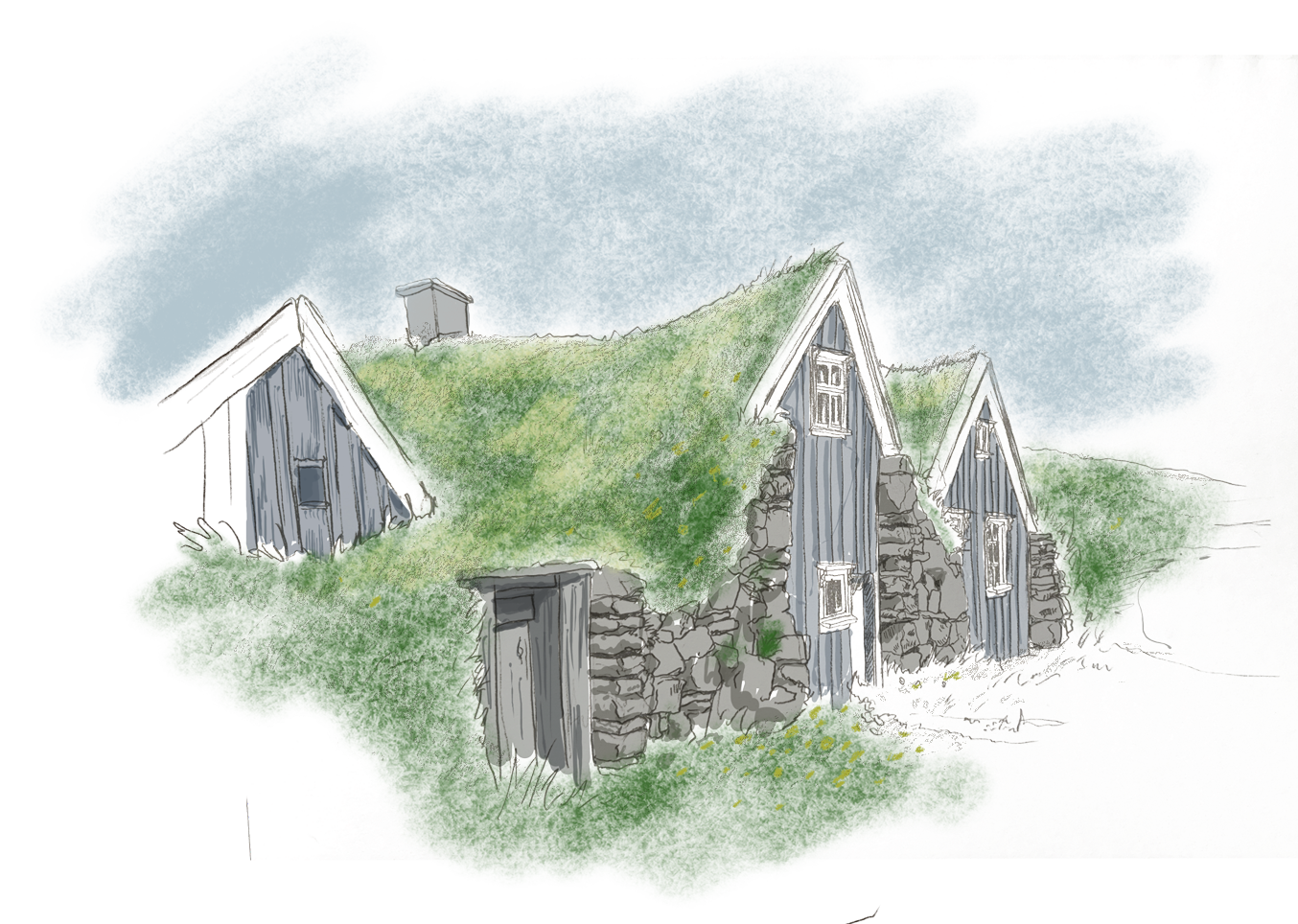
Zelina wanted to see the otherworldly landscape of Iceland firsthand and explore the science behind how it was formed.
"Iceland’s culture is intertwined with its landscapes and environment. This has strengthened their efforts to promote renewable energy and sustainable practices, serving as an example that if communities can work together to advocate for sustainability, it is possible to make meaningful changes," Zelina said.
The most memorable part of her trip was hiking across a glacier.
"We got to peer down into a hole in the ice, which looked down into a stream of water melting off. This water flows to a glacial lagoon, which has been growing in recent years, a visible reminder of how quickly the landscape is changing due to climate change. It was eye-opening and tied directly to the course’s focus on why sustainability matters," Zelina said.
She encourages other students to try out the Iceland trip, which felt was great for expanding horizons both personally and academically. "It is always more impactful to learn things outside of the classroom, especially for topics having to do with the environment," she said.
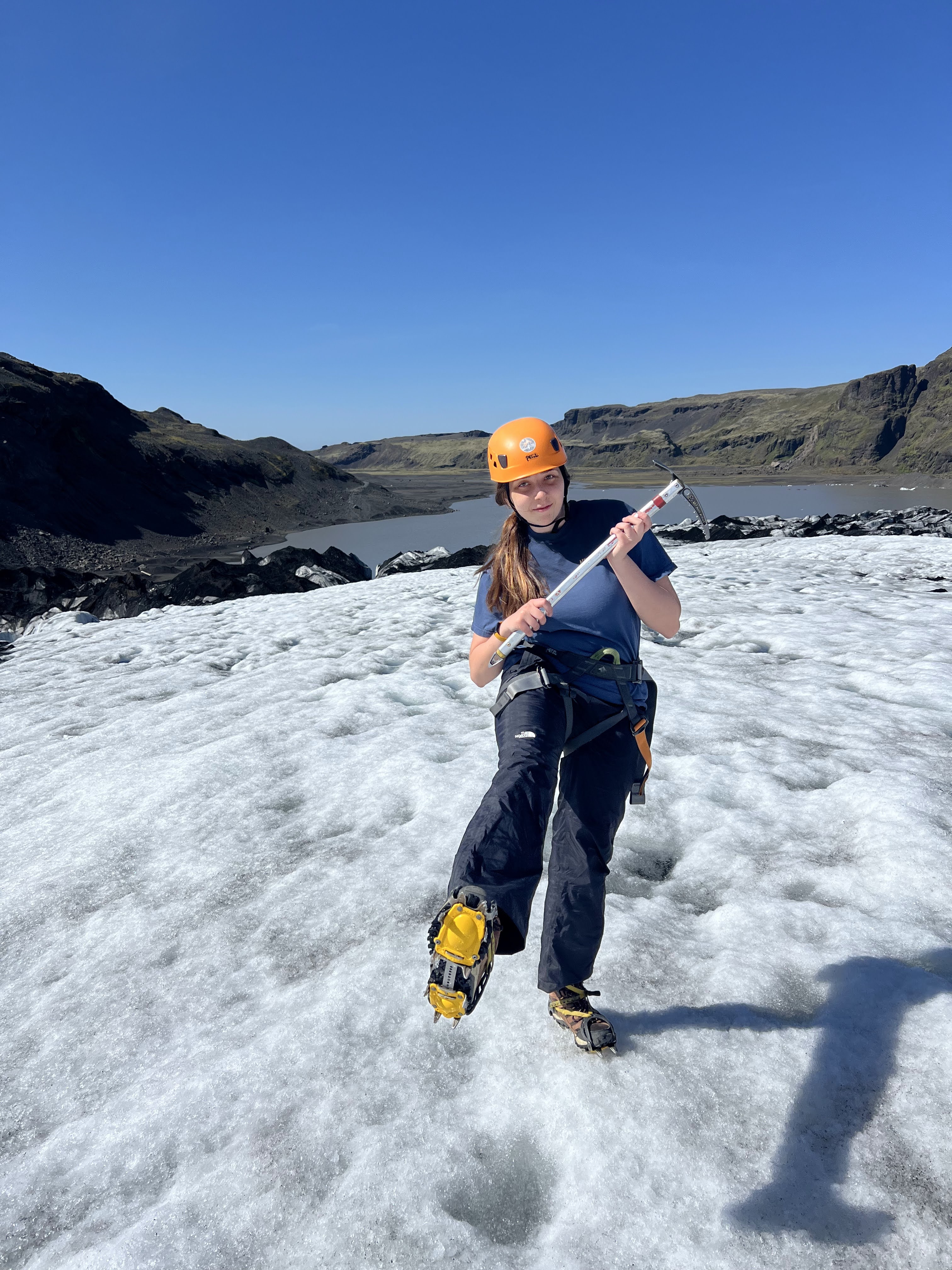
Dalton Van Leeuwen
Major: Environmental and Conservation Biology
Grad Year: 2028
"For years, the animal that most drew me to the idea of visiting the Galapagos, and probably the most fascinating reptile in my view, was the Marine Iguana. No zoo in the world holds this species, so outside of preserved museum specimens, the only way to see one is in its natural habitat."

Van Leeuwen knew when he began his studies at Â鶹ĘÓƵ×îĐÂ×îČ« that he wanted to do at least one education-abroad session.
"I have increasingly wanted to try visiting foreign destinations in order to see exotic wildlife in vivo. The Galápagos Archipelago was one of the places I had on my bucket list, so it was a major interest for me. I also had an interest in trying wildlife photography, and the unusual indifference the native animals tend to hold toward humans meant it would make an excellent trial run for learning how to take pictures of animals in the wild. I knew that the Galápagos faced a number of conservation challenges, and was hoping to see how these challenges were being addressed," he said.
He mentioned that they were able to see conservation work in action; on San Cristobal and in Santa Cruz, they visited breeding facilities for a number of species of Galapagos giant tortoise and spoke with a conservation organization about which methods should be implemented to preserve the pink iguana.
"Speaking with other students, I discovered that even for others in the conservation or conservation-adjacent fields, there exists a wide variety of opinions and perspectives on how conservation ought to be performed, what issues have higher or lower priorities, and what expectations were held for employment following graduation," he said. "This also led to introspective discoveries. I learned that just because someone else also values wildlife conservation, that does not mean that we necessarily hold the same views, and that I should put emphasis into fully understanding how I feel about important topics in the field and learn from the perspectives that others hold."
His favorite memory of the trip was finally spotting a male marine iguana - the animal he most wanted to see - on Isabela Island.
"I was no more than eight feet from the iguana, a huge male, perfectly posed against the crashing waves in the background. I took as many pictures as I possibly could, but with the mist from the waves distorting the image, I knew a great many would turn out to be out of focus," he said. "I took a great many pictures during that trip, which I was really happy with, but I think that the adventurous feeling, combined with how excited I was to finally see the animal, along with how beautiful the spot was made it the most memorable event of the trip."
Van Leeuwen had never left the country prior to this year, and only once a few months before his trip to the Galapagos. The new experience, combined with seeing exotic creatures and getting to practice more photography, opened his eyes.
"I think that all students should try a study-abroad trip if they have the resources and ability to do so. Real-life experience of a completely different environment and culture is something that cannot be achieved otherwise. Doing it via study abroad means that you get to do it in a more controlled and secure way, and with other students who may share some of your interests," he said.
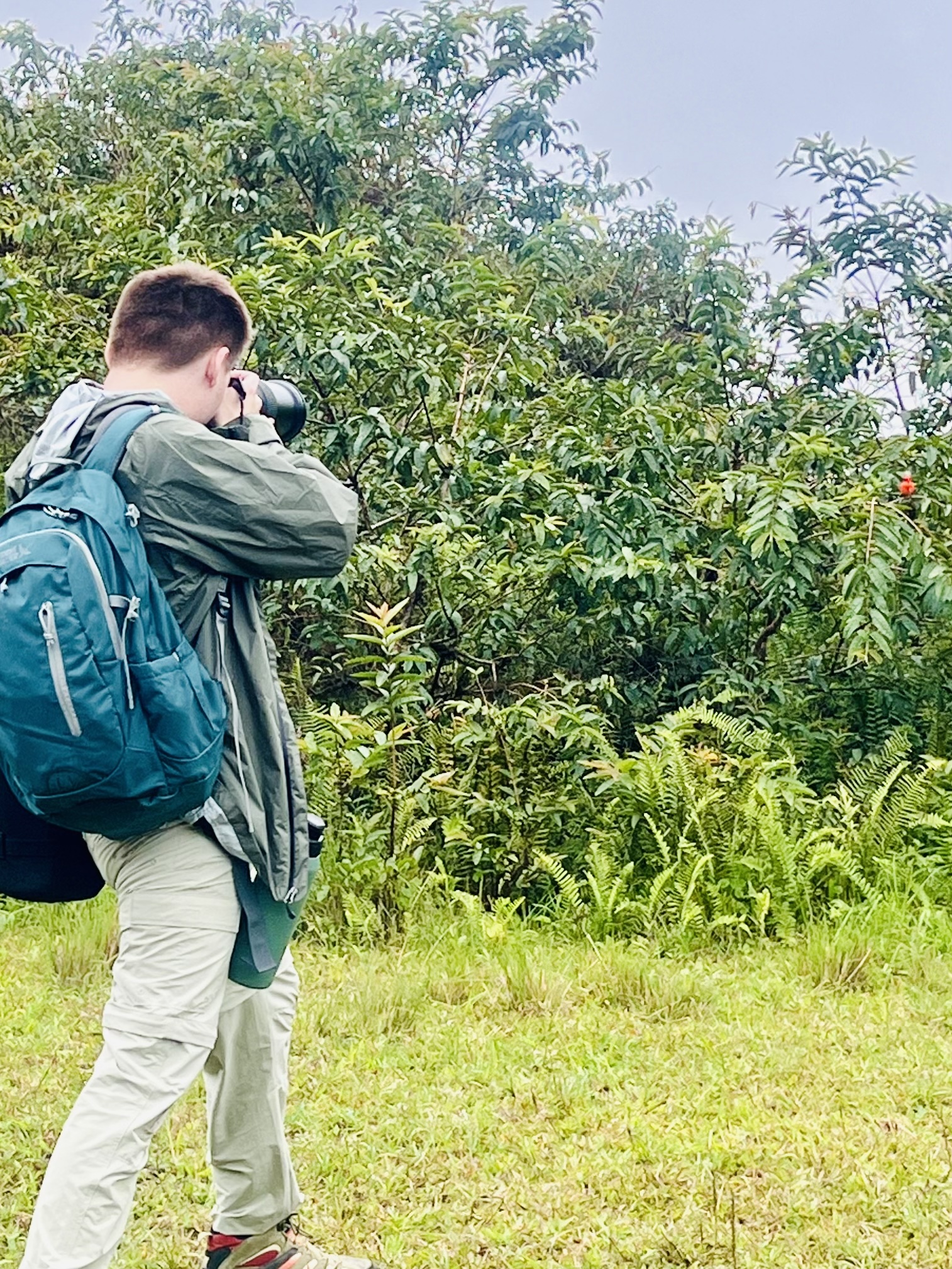
Ava Snider
Major: Fashion Merchandising
Grad year: 2028
"I was really hoping to get to see and learn about all of the fascinating things that make Iceland seem like a different planet, such as the volcanoes, glaciers, lagoons and not to mention all of their beautiful waterfalls."
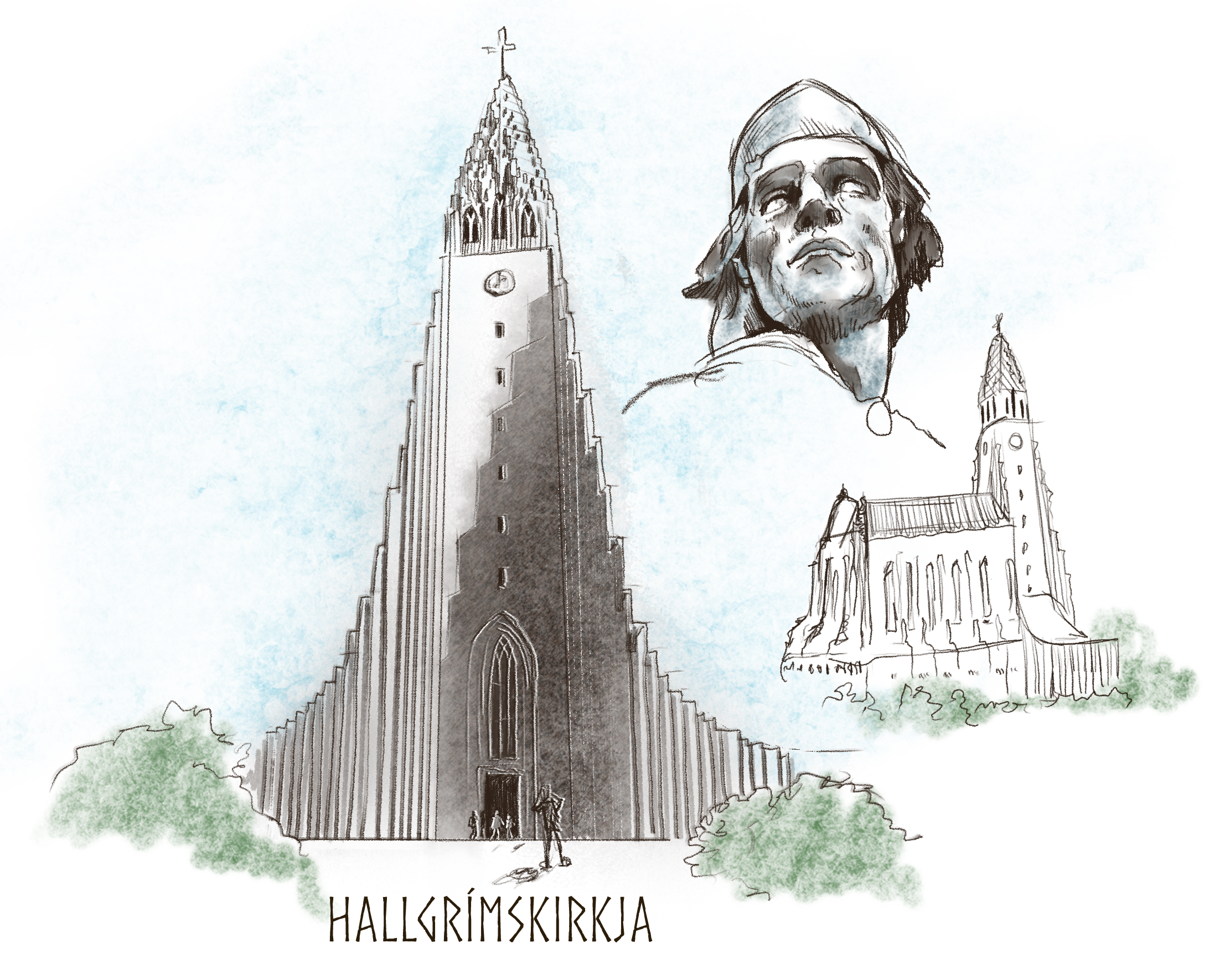
Ava Snider has always wanted to travel abroad and saw this trip to Iceland as the perfect opportunity for her first trip. The fact that it was faculty-led was another bonus, as it added to her feeling of safety on her first trip abroad.
The class in Iceland focused on sustainability, landscapes and culture. As a fashion merchandising major, Snider looked at it through a fashion lens.
"The most important part of fashion would be the culture and sustainability. Although they are currently working on sustainability issues like water, heating and electricity, I was able to see some of the ways we could use just those to help cut down on carbon emissions in the fashion industry," she said.
She appreciated the ability for students to lean into their own studies and to learn from each other. Throughout their time in Iceland, each person presented to their peers on a topic they were studying.
"I was able to focus on the fashion of Iceland and dive deep into their culture. Throughout the two weeks, each person presented on a topic they were studying so we were all able to learn about Iceland while also doing something we were interested in," Snider said.
Aside from the research, she was able to soak in the Icelandic culture and her surroundings, as well as how areas of her studies were conducted in another country.
"I got to learn all about the different outfits and patterns they use and what they symbolize. During the trip, we stopped at this really cool wool factory, where, when you're shopping, you can see right into the factory at all the machines and designs being made," she said.
